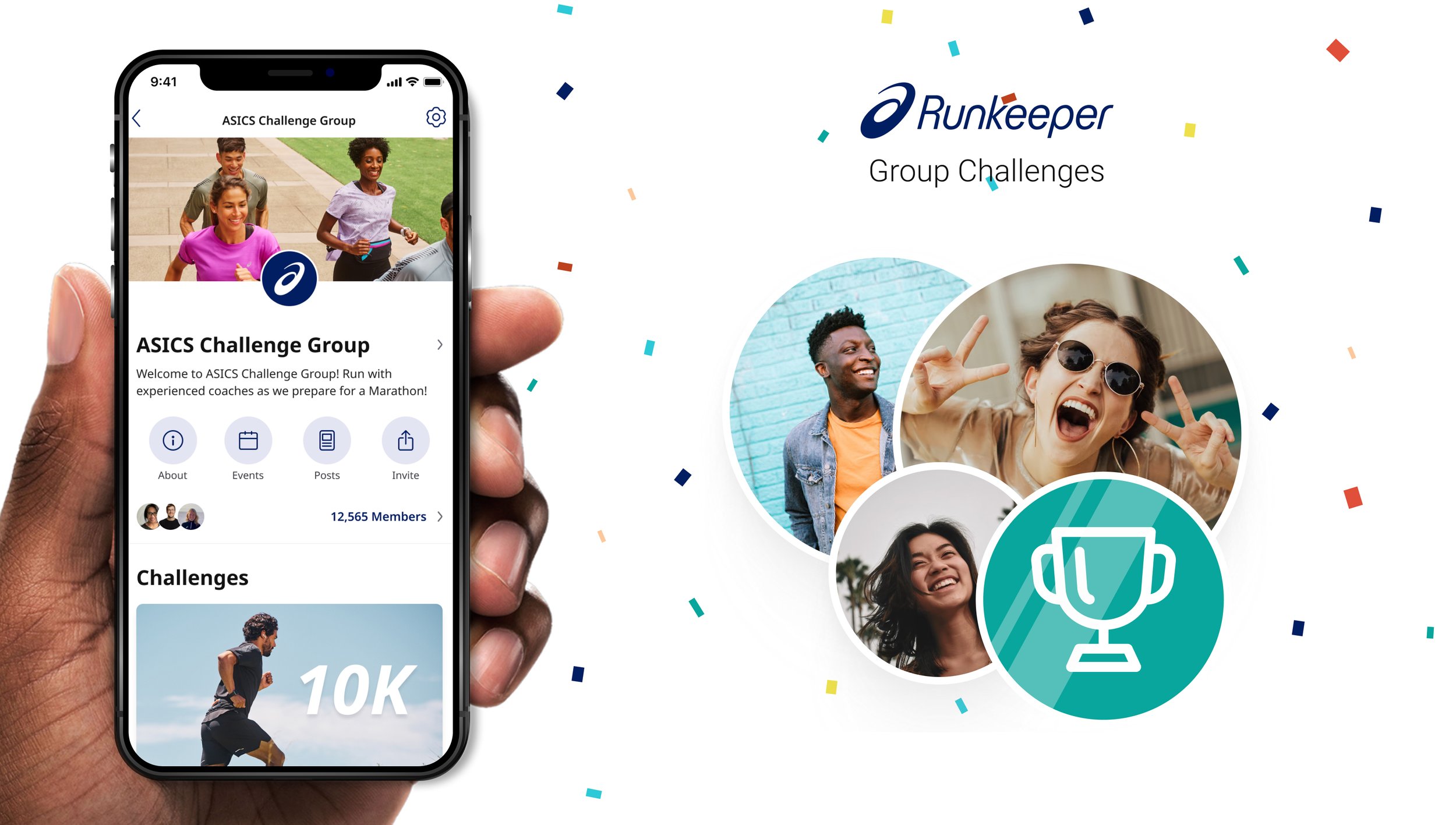
Group Challenges
ASICS Apps Runkeeper B2C | Research, design, design system contribution | May 2023
Creating a social running experience for group users, shifting user behaviour & increasing retention by 426%.
A sneak peak of the outcome…
Meet the Team
Shout outs
Problem Statement
While existing Runkeeper groups facilitated meaningful engagement between ASICS & runners, they were only partially useful to a small segment of runners willing to show up at a store front.
Users
Had no way to access the benefits of engaging with other runners unless they went to the store.
ASICS
Wanted groups to be a place where they could reliably connect with runners.
Constraint
Technical
Our developers weren’t familiar with the code from other projects so this limited the scope of the solutions we were able to consider.
Organizational
Our team experienced challenges with making changes that could affect feature areas owned by other pods.
How might we…
Create a way for a wider segment of runners to experience the benefits of running with others, so that they see value in returning to view groups more often.
How we Defined Success
Quantitative goal
15% increase in the rate of group returns (the average group member returns more than once a week).
Qualitative goal
Users see value in returning to view groups and have an overall positive opinion on their experience.
Working closely with the product team.
My Design Process
Because we created an Opportunity Tree during the development of Groups, we had a general idea that the next solution may involve providing content for them to engage with. However, we purposely began with an open ended approach to leave room for us to rely on user research to inform our decisions. After completing initial discovery we chose to focus on trying to implement challenges.
Previous Research
Through previous research, we found this consistent takeaway from users, “I want motivation, support, & accountability to help me run”. We also confirmed user’s core jobs to be done.
Initial Research
We sent out surveys and conducted more user interviews to better understand what motivation, support, or accountability could look like.
Non-competitive Leaderboards?
We got feedback from users that could lead one to believe that the solution may be standard challenges with leaderboards. But this information clashed with a general understanding that our users don’t like anything that is too competitive.
From research to requirements
Motivating Leaderboards
Well-designed leaderboards promote the satisfaction of competence, relatedness, and autonomy for most users. We want users to “want to win” rather than “want to avoid losing”
Rough Concept
I quickly sketched out my initial thoughts of how we might organize information to support competence, relatedness, and autonomy for users. Prioritizing personal progress and giving them a choice to see the leaderboard.
Brainstorming is like creating a beach…
“Individual ideas are only as valuable as grains of sand.”
I created over 100 screens exploring entry points, progress cells, leaderboards and challenge details screens.
Technical Feedback
I regularly synced with developers on my team to gain insight into what was feasible given the constraints.
Design Feedback
During design review, I received feedback that suggested looking for more opportunities to provide positive cues that could make users want to view leaderboards.
Suggested Changes
This is a snapshot of the suggested changes from the design and development teams.
Testing
We tested the flows with the suggestions and found that users had trouble navigating to the leaderboard. The main takeaway being that we should try to place information where users will expect to see it.
Entry point
Using Common Patterns
After additional surveys and A/B tests we landed on this design for the entry point to an active challenge.
Using common patterns to place recognizable information where users expect to see it. As well as leveraging a new progress cell component to support competence and habit forming by providing a positive cue.
Main screen
Motivating Leaderboard
We were intentional about where we placed the leaderboard. Users had to opt-in to view it, which supported autonomy.
We also decided to place the progress of fellow group members in a list next to the main user’s to simulate the feeling of running together.
The outcome
Benefits
In the end, we created a tool for groups to engage a wider segment of runners by proving and experience that simulated the feeling of running with others. The subsequent test group managed to accrue 169 members that visited group more than 3.3k times in 2 months! Surpassing our previous benchmark by 426%.
Takeaways








